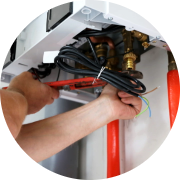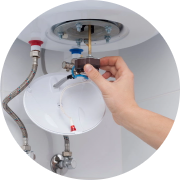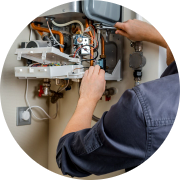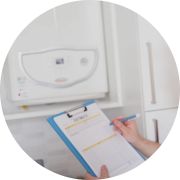Why Does the Floor Type Matter with Underfloor Heating?
For underfloor heating systems to work at their best, a conductive floor surface is recommended. Materials like stone and tile are highly thermally conductive which means even when the underfloor heating is turned off, the floor will remain warm and continue to give out heat. This is why in extensions with large amounts of glazing or in conservatories, tiles are often laid.
Stone and tiles work well with underfloor heating, whereas a heavy-duty carpet won’t have the same effect. Your home will still be heated, but because carpet isn’t as thermally conductive and acts as a type of buffer, you would need to have the heating on at a higher temperature for longer.
The more thermally conductive flooring is, the better it works with underfloor heating.
Can Wood Floor Be Used with Underfloor Heating?
Wood isn’t the most thermally conductive material and therefore, like carpet, would require the heating to be on for longer periods of time and at a higher temperature in order to heat the room to the same level as with stone or tiles. That being said, underfloor heating doesn’t reach temperatures as high as radiators, and high temperatures could change the moisture levels in certain types of wood flooring.
If the moisture content in solid wood floors change (if the temperature exceeds 27°c), the wood could begin to bow and flex, creating an uneven floor surface that looks bad and poses a trip hazard. With this in mind, we advise against using engineered hardwood flooring with an underfloor heating system.
Although solid hardwood floors aren’t a good option, there are other types of wooden flooring that work well with underfloor heating.
By far, the best wooden option for underfloor heating is engineered wood flooring. It has an inner core made of plywood and is finished on top with hardwood timber. The reason this type of wood works so well is that it is specifically designed to have limited shrinkage and growth when moisture levels change, meaning it’s not as susceptible to bowing or warping like traditional solid wood flooring. This makes engineered wood floors a great option for use with an underfloor heating system.
Timber flooring, also known as natural hardwood flooring, is the same as your floorboards. It can be prone to warping, but quarter-saw timber is less so. This is because it’s cut to absorb moisture, making it less likely to bow, therefore a better choice to lay on top of underfloor heating.
Things to Consider When Choosing Wood Flooring for an Underfloor Heating System
As well as the material and type of wood flooring you choose, there are a few other factors to consider when combining wood flooring with underfloor heating.
Firstly, you’ll need to think about how thick the wood floor is. Ideally, you’ll choose boards that are less than 18mm thick as they will allow more heat to penetrate the wood. In addition, we recommend the thickness of the board is combined with the width of the board to create a ratio of between seven and 11. This is because narrower boards show less movement, so are ideal for underfloor heating. If you’re unsure about the ratios, speak to us or your wood floor provider for help.
- Conductivity and heating temperature
As mentioned previously, we advise you to keep your heating to a maximum of 27°c with wooden flooring. This is a means tested temperature that minimises the growth and shrinkage rate of the wood. After extensive industry testing, it’s widely agreed that when heated to no more than 27°c, the expansion of the wood is almost invisible to the naked eye, making it optimal for wooden floors. This isn’t necessarily a hard and fast rule as some wood can be heated higher, but it’s best practice to stick to 27°c or below, or whatever your wood supplier recommends.
Installing underfloor heating below wooden flooring means that you need to take a few extra steps, including acclimatisation. This involves leaving the wood in the room it’s going to be installed in for a couple of days. Once the heating has been fitted, you should leave it off for another 48 hours and then slowly increase the heating in 1°c increments from 15°c every day. This will minimise the amount of expanding and shrinking the wood will go through.
Installing Underfloor Heating Beneath Wooden Flooring
At Bbright, we’re proud to be home to a team of experienced underfloor heating specialists. We are best placed to install a heating system beneath your wooden flooring, and we can provide advice on the best types of wood to go for if you’re unsure. To find out more, please contact us and we’ll be happy to help.




